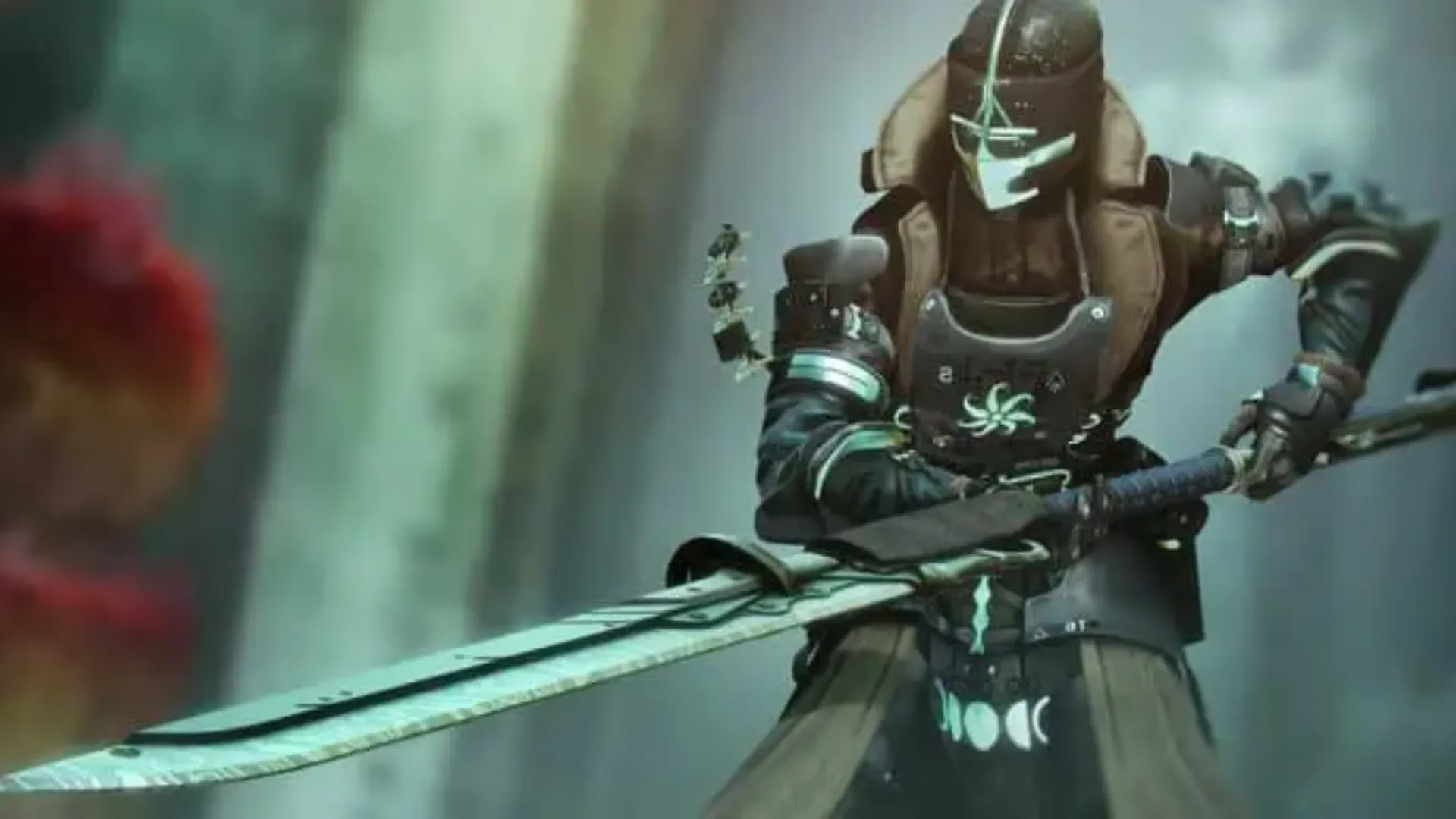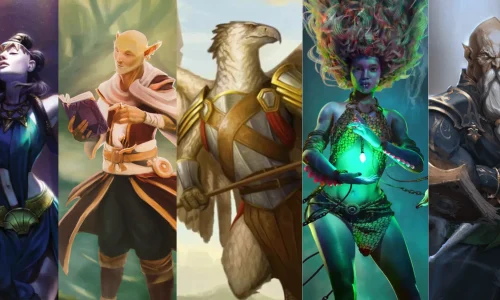The Halberd is a polearm weapon in DnD 5e that features a combination of an axe and a spear. It consists of a long handle, often made of wood, with a blade attached at the top.
The blade typically has an axe-like shape on one side and a spear-like point on the other. The Halberd is designed for both slashing and thrusting attacks, making it a versatile weapon in combat.
Halberd Statistics
These statistics provide players and Dungeon Masters with a general understanding of Halberd’s accessibility, weight, and classification within the game’s mechanics.
Cost and Weight
The cost and weight of a Halberd can vary depending on the game setting, availability of materials, and local economy. In general, the cost of a Halberd falls within a moderate range, making it accessible to adventurers with some funds.
As for its weight, a Halberd typically weighs around 6 to 8 pounds (2.7 to 3.6 kilograms), which can vary slightly based on the specific design and materials used.
Weapon Category
The Halberd belongs to the polearm weapon category. Polearms are a class of weapons characterized by their long handles and the inclusion of various bladed or pointed attachments, such as axes, spears, or hooks.
The Halberd’s combination of axe and spear elements places it within this category, alongside other weapons like the Glaive, Pike, and Halberd variants.
Rarity
In terms of rarity, the Halberd is typically considered a common or uncommon weapon. Common weapons are widely available and can be found in most settlements or obtained from general weapon vendors.
Uncommon weapons, on the other hand, are somewhat harder to come by and may require specialized shops, blacksmiths, or specific sources to acquire.
Damage and Properties
The basic properties and characteristics of the Halberd define its role in combat and make it a popular choice among warriors seeking a versatile and powerful weapon.
Damage Type
The Halberd deals slashing damage. Slashing damage is effective against targets vulnerable to this type of attack, such as creatures with exposed flesh or less protected areas.
Damage Dice
The damage inflicted by the Halberd is determined by its damage dice. The specific dice used for damage calculation depend on the weapon’s statistics and can vary based on the game’s rules and any modifications applied to the weapon.
Versatile Property
The Halberd possesses a versatile property, which allows the wielder to use it in two hands. When used with two hands the Halberd inflicts greater damage compared to when used with one hand.
This versatility provides the wielder with the option to choose between one-handed or two-handed attacks based on the tactical situation.
Reach Property
In DnD 5e one of the key features of the Halberd is its reach property. The reach property grants the wielder an extended reach beyond the normal melee range.
With the Halberd, characters can attack targets that are slightly farther away, giving them an advantage in combat by keeping their foes at a distance. This additional reach allows characters to strike enemies without putting themselves in immediate danger.
Proficiencies and Requirements
Proficiency with martial weapons is required to effectively wield the Halberd. Characters who possess the Martial Weapon Proficiency feature or class feature have the necessary training to handle martial weapons, including the Halberd.
This proficiency ensures that characters can use the Halberd proficiently, utilizing its full potential in combat.
Strength Requirement
The Halberd typically has a strength requirement associated with it. This requirement denotes the minimum level of strength a character must possess to effectively wield the weapon.
It ensures that characters have the necessary physical strength to swing and control the Halberd, given its size, weight, and potential for powerful attacks. Failing to meet the strength requirement may result in penalties or restrictions when using the Halberd.
These proficiencies and requirements outline the necessary training and physical attributes characters need to effectively use the Halberd in combat.
Characters who possess the martial weapon proficiency and meet the strength requirement can maximize the weapon’s potential, while those who lack the proficiency or sufficient strength may face limitations when wielding the Halberd.
Halberd Attacks and Combat Mechanics
Combat mechanics and properties of the Halberd in DnD 5e provide players with the necessary knowledge to effectively utilize the weapon’s attack rolls, damage calculation, critical hits, versatility, and reach in combat encounters.
Attack Rolls
When making an attack with a Halberd, the player rolls a d20 and adds their proficiency bonus (if proficient with the weapon) and the relevant ability modifier, typically Strength.
The total result is compared to the target’s Armor Class (AC). If the attack roll meets or exceeds the target’s AC, the attack hits successfully.
Damage Calculation
To determine the damage inflicted by a successful Halberd attack, the player rolls the weapon’s specified damage dice. This dice roll represents the base damage of the Halberd, which is then modified by any relevant ability modifiers, such as Strength.
The final result is the damage dealt to the target.
Critical Hits
When a player scores a critical hit with a Halberd, they roll extra damage dice in addition to the weapon’s regular damage. The number of additional dice rolled can vary based on the game’s rules or features that affect critical hits.
These additional dice contribute to the overall damage of the critical hit, potentially dealing a significant blow to the target.
Two-Handed and Versatile Attacks
The Halberd possesses a versatile property, allowing characters to choose between wielding it with one hand or two hands. When using the Halberd with two hands, characters gain the benefit of increased damage potential.
By gripping the weapon firmly with both hands, the character can deliver stronger and more powerful strikes. This versatility gives players the tactical option to optimize their attacks based on the situation at hand.
Reach Property
One of the significant advantages of the Halberd is its reach property in DnD 5e. The reach property allows characters to make melee attacks against targets that are farther away than with typical melee weapons.
This extended reach grants the character an advantage by enabling them to engage enemies from a safer distance, reducing the risk of being counterattacked.
Feats that Enhance Halberd 5e Usage
These feats offer unique ways to augment the usage of the Halberd, empowering characters with specialized maneuvers, increased damage potential, strategic advantages, or magical enhancements.
Polearm Master
This feat enhances the character’s proficiency with polearms, including the Halberd in DnD 5e. It provides several benefits, such as the ability to make an opportunity attack when enemies enter the character’s reach.
The option to use a bonus action to make an additional attack with the butt end of the Halberd, and the ability to stop enemies’ movement when they enter the character’s reach.
Great Weapon Master
While not specific to the Halberd, this feat can greatly enhance the effectiveness of two-handed Halberd attacks. It allows characters to take a -5 penalty to their attack roll in exchange for a +10 bonus to damage, potentially dealing
Additionally, if the character scores a critical hit or reduces an enemy to 0 hit points with a melee attack, they can make an additional attack as a bonus action.
Class Abilities and Features
These class abilities provide specific enhancements and unique abilities that synergize with the Halberd. Whether through feats that unlock new combat options, such as Polearm Master and Great Weapon Master, or class abilities that amplify the Halberd’s power and versatility.
Fighter’s Combat Superiority
Fighters who choose the Battle Master archetype gain access to Combat Superiority maneuvers. Some maneuvers, such as Trip Attack or Pushing Attack, can be used with a Halberd to add additional effects to attacks, such as knocking enemies prone or pushing them away.
Paladin’s Divine Smite
Paladins can expend spell slots to unleash powerful Divine Smites on their foes. By channeling divine energy into their Halberd strikes, paladins can deal extra radiant damage, making their attacks particularly devastating against certain enemies, such as undead or fiends.
Barbarian’s Reckless Attack
Barbarians have the ability to go into a reckless frenzy, granting them an advantage on melee attack rolls for a turn.
This ability can be combined with the reach of a Halberd, allowing barbarians to strike multiple enemies with an advantage, increasing their chances of hitting and dealing significant damage.
Warlock’s Pact of the Blade
Warlocks who choose the Pact of the Blade feature can summon a Halberd as their pact weapon. This allows them to bond with the Halberd, making it a magical weapon that can be dismissed and summoned at will.
They can also enhance their pact weapon with invocations to gain additional benefits or customization options.
Enhancing Magical Properties
Halberd can be imbued with magical properties to enhance its effectiveness and grant additional benefits in DnD 5e. These magical properties can be found in the form of enchanted weapons, spells, or through the assistance of skilled artisans or magical beings.
Here are some examples of magical properties that can enhance the Halberd:
+1, +2, or +3 Enhancement
The Halberd can be enchanted with a magical bonus, such as +1, +2, or +3, which adds to the attack and damage rolls made with the weapon. This enhancement increases Halberd’s effectiveness in combat and makes it more formidable against enemies.
Elemental Damage
The Halberd can be enchanted to deal with additional elemental damage, such as fire, frost, lightning, or acid. This magical property adds extra damage to the chosen element with each successful hit, making the Halberd particularly effective against creatures vulnerable to that element.
Reach Extension
The Halberd’s reach property can be magically extended, allowing the wielder to attack enemies even farther away. This enchantment increases the weapon’s reach beyond its normal limits, granting the wielder an extended advantage in combat.
Vorpal
A Halberd with the Vorpal enchantment possesses the ability to sever heads. When a critical hit is scored with the weapon, there is a chance for an instant kill, decapitating the target. This potent magical property makes the Halberd a fearsome weapon against formidable foes.
Returning
A Halberd with the Returning enchantment magically returns to the wielder after being thrown. This property allows the wielder to throw the Halberd as a ranged attack and have it return to their hand afterward, providing versatility and an element of surprise in combat.
Smiting
Wielders can enchant the Halberd with the power of smiting, enabling them to deal additional radiant or necrotic damage to specific types of creatures, such as undead or fiends. This magical property enhances Halberd’s effectiveness against these particular enemies.
Challenges and Limitations of the Halberd
While the Halberd is a versatile and powerful weapon, it is not without its challenges and limitations. It is important for adventurers to be aware of these factors to make informed decisions in combat and understand the potential drawbacks of relying on the Halberd.
Here are some challenges and limitations associated with the Halberd:
- Size and weight can hinder maneuverability.
- Requires both hands, limiting the use of shields or secondary weapons.
- Vulnerable to disarmament or targeted weapon effects.
- Limited effectiveness in close quarters or tight spaces.
- Specialized proficiency may be less common.
- Non-magical Halberds may face resistance or immunity.
Halberd 5e vs. Other Polearms
The Halberd is just one type of polearm, and it has distinct characteristics that differentiate it from other weapons in the same category. Here is a comparison between the Halberd and some other common polearms:
Glaive
The Glaive is a polearm with a single-edged blade on top and a curved cutting edge. Unlike the Halberd, it lacks the hook or spikes on the opposite end.
Characters who prioritize extended reach and sweeping attacks may prefer the Glaive, which typically surpasses the Halberd in terms of reach.
Pike
The Pike is a polearm with a long, spear-like head and a narrow, pointed blade. The Halberd’s exceptional reach and design allow it to excel at keeping enemies at bay, primarily due to its focus on thrusting attacks.
Compared to the Halberd, the Pike sacrifices versatility and the ability to make sweeping strikes in favor of extended reach and focused piercing damage.
Poleaxe
The Poleaxe combines elements of an axe, a hammer, and a spear. It typically features an axe blade on one side, a hammerhead or spike on the opposite side, and a spear-like point at the top.
The Poleaxe offers a versatile combination of slashing, bludgeoning, and piercing damage, making it effective against different types of armor and opponents. However, it may have a shorter reach than the Halberd.
Quarterstaff
While not a traditional polearm, the Quarterstaff is a simple and versatile staff weapon that can be used for melee combat. It lacks the specialized features of the Halberd and other polearms but can still deliver effective strikes.
Depending on the situation, users can employ a two-handed grip with the Halberd, utilizing it defensively or offensively. However, it generally has a shorter reach and deals less damage compared to the Halberd.
Strategies for Utilizing the Halberd in Battles
- Leverage the halberd’s reach advantage to keep enemies at a distance.
- Employ sweeping attacks to target multiple foes within reach.
- Utilize the hook or spike to disarm or immobilize opponents.
- Combine the halberd’s power with crowd control abilities for maximum effectiveness.
- Coordinate with allies to create opportunities for devastating attacks.
- Take advantage of the halberd’s versatility by adjusting tactics based on the enemy’s strengths and weaknesses.
- Prioritize mobility to exploit the halberd’s potential in open spaces.
- Maintain situational awareness to avoid being caught off-guard in close quarters.
Types of Halberd in D&D 5e
There are several variations of the halberd, each with its own unique design and characteristics. These different types of halberds offer players and characters a range of options when choosing their preferred weapon. Here are some notable variations:
Standard Halberd
The standard halberd features a long pole with a large axe-like blade on one end and a hook or spike on the other. It has a versatile property, allowing characters to wield it with one or two hands, adjusting their combat style accordingly.
The standard halberd typically deals slashing damage with its axe blade and piercing damage with its hook or spike.
Elemental Halberd
Enchanted versions of the weapon, known as elemental halberds, incorporate elemental energy into their attacks. They can infuse halberds with fire, frost, lightning, acid, or other elemental powers, which will add extra damage to the chosen element for successful hits.
Characters who seek to exploit elemental vulnerabilities or add variety to their damage output highly seek after these halberds.
Ceremonial Halberd
Ceremonial halberds are ornate and decorative weapons often associated with ceremonial or ceremonial roles. While they may lack the magical properties or enhanced capabilities of other halberd types, they are still formidable weapons in combat.
Characters who value aesthetics and symbolism can use ceremonial halberds, which can also serve as a status symbol.
Enchanted Halberd
Enchanted halberds are imbued with magical properties that enhance their effectiveness and grant additional benefits. Halberds can possess magical properties, including increased attack and damage bonuses, special abilities, or unique enchantments that are specifically tailored to them.
You can acquire enchanted halberds through quests, looting treasure, crafting, or as rewards from powerful magical entities.
Halberd of the Guardian
Protectors and defenders associate the Halberd of the Guardian with its legendary status in DnD 5e. It possesses unique properties such as increased damage, a bonus to saving throws, or special defensive abilities.
Noble knights, elite guards, or legendary heroes who dedicate themselves to the protection of others often wield these halberds.
Customized Halberds
In D&D, characters can work with skilled artisans, blacksmiths, or magical craftsmen to create customized halberds tailored to their specific needs. Customized halberds can feature personalized designs, engravings, or modifications to enhance their performance in combat.
These halberds are a reflection of the character’s preferences, fighting style, and individuality.
Halberd Fighting Techniques
Fighting with a halberd requires skill, precision, and an understanding of its unique capabilities. Here are some common halberd fighting techniques used by skilled warriors in DnD 5e:
Thrust and Stab: Use the pointed end of the halberd to deliver quick and accurate thrusting attacks, targeting vital areas of the opponent’s body. This technique is effective for close-range combat or when engaging heavily armored opponents.
Sweeping Strikes: Take advantage of the halberd’s axe blade to deliver powerful sweeping strikes. Utilize wide arcs to attack multiple enemies simultaneously or to cover a larger area, forcing opponents to keep their distance.
Hook and Pull: Utilize the hook or spike at the back of the halberd’s blade to hook onto an opponent’s armor, weapon, or limbs. Once hooked, use leverage to pull or disarm the opponent, leaving them vulnerable to follow-up attacks.
Polearm Parry: Leverage the length and strength of the halberd to parry incoming attacks. Use the shaft of the halberd to block or deflect enemy strikes, creating openings for counterattacks.
Feint and Strike: Employ feints and deceptive maneuvers to confuse opponents and create opportunities for decisive strikes. Feint in one direction and quickly change the direction of attack, catching opponents off guard.
Reach Advantage: Exploit the halberd’s reach to keep opponents at a distance, preventing them from closing in for melee attacks. Maintain proper spacing and use footwork to control the engagement and dictate the flow of battle.
Agile Maneuvers: Maintain mobility and agility during combat. Utilize footwork and positioning to maintain distance, exploit openings, and evade incoming attacks.







